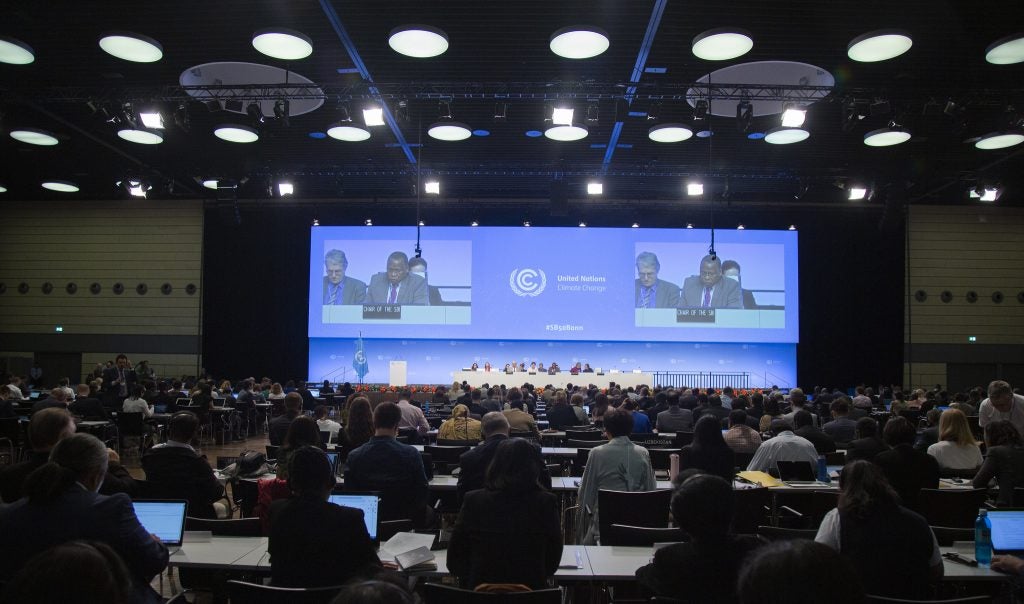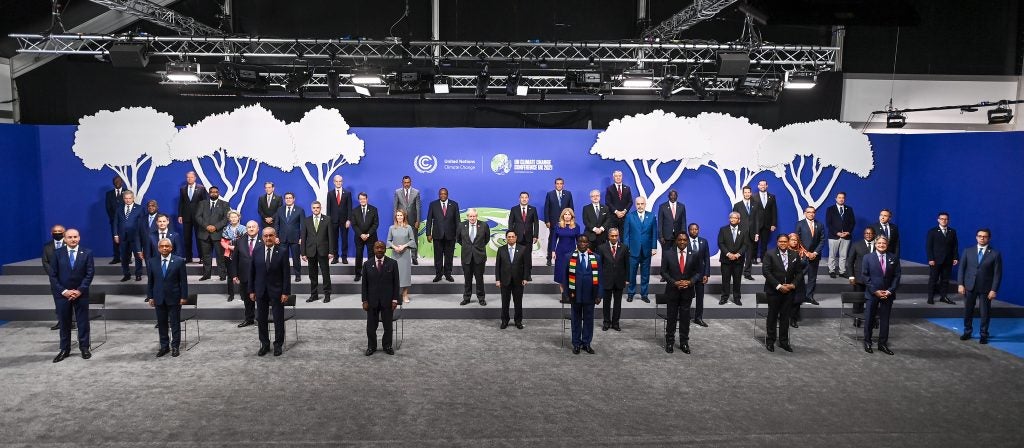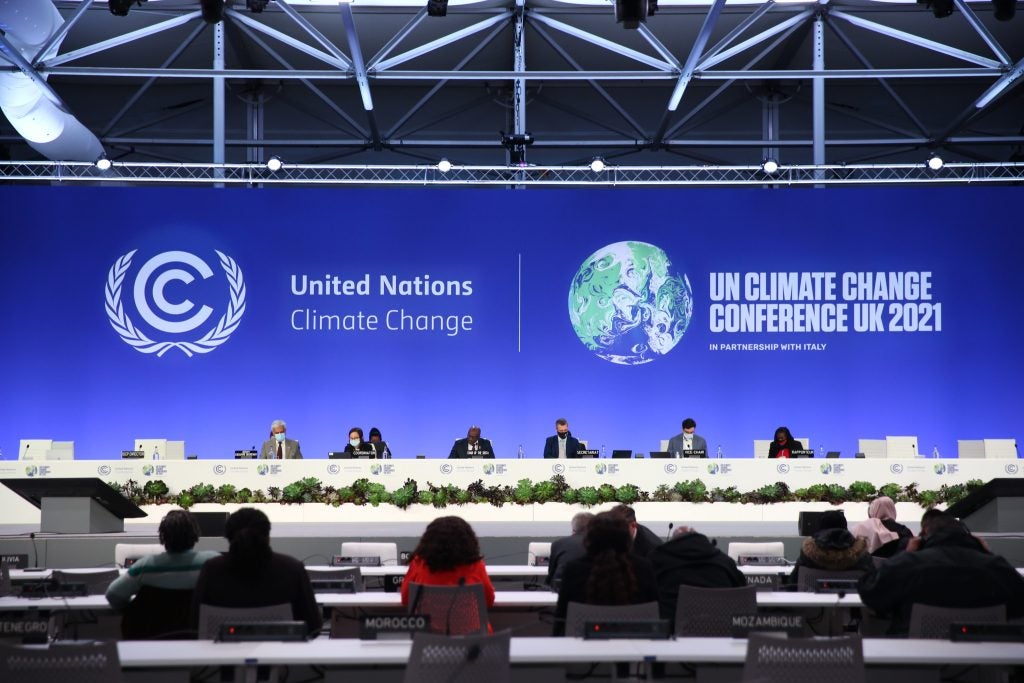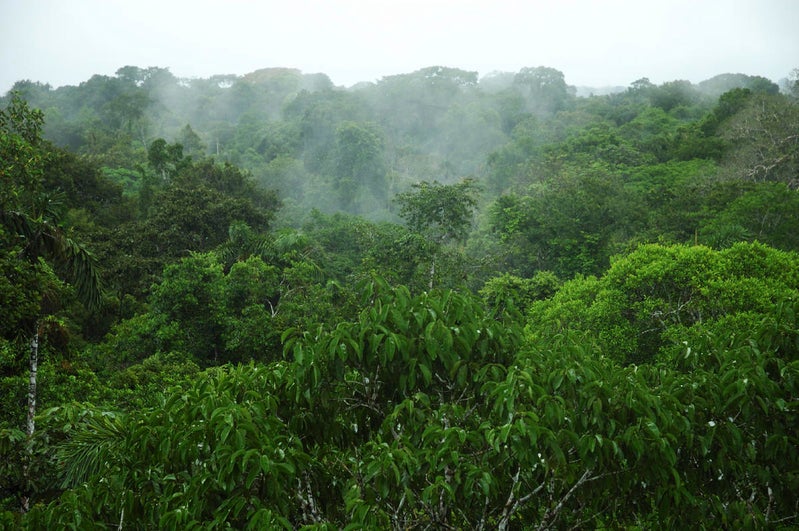Co-authored by Angela Churie Kallhauge, Executive Vice President, Impact; Maggie Ferrato, Manager, Global Climate; and Julia Ilhardt, High Meadows Fellow

The COP27 logo seen on a flag in Sharm El-Sheikh, Egypt. Source: Alamy
It’s been a year since countries and companies announced new climate pledges in Glasgow.
Since then, war and economic disruption, on top of a still-raging pandemic and increasingly destructive natural disasters, have complicated those commitments – and arguably made them even more urgent. The latest report from the Intergovernmental Panel on Climate Change underscores that we have very little time left to meet even the upper limit of the Paris Agreement’s temperature goals.
COP27 is expected to be a “working COP,” meaning we’re likely to see incremental progress on key issues rather than major announcements. But that doesn’t make it any less important. This COP is a chance for countries to take meaningful steps toward tackling the climate crisis.
Here are the three issues to watch in Egypt – both in the negotiations and on the sidelines – to ensure we implement our existing commitments while raising our ambition. Read More














